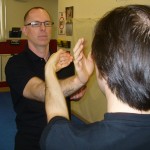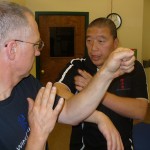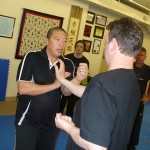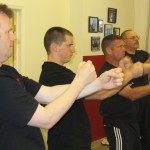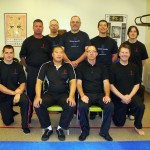 Have you ever been at a party or other social function where there’re lots of people mingling and interacting, really thoroughly enjoying themselves, each other and the event? You get a warm and fuzzy feeling deep down inside and say to yourself, “I’ve got to get some photos to remember this event.” Maybe it’s your birthday, graduation, or promotion party and you want to get some cherished moments to mark the occasion and to have some great memories.
Have you ever been at a party or other social function where there’re lots of people mingling and interacting, really thoroughly enjoying themselves, each other and the event? You get a warm and fuzzy feeling deep down inside and say to yourself, “I’ve got to get some photos to remember this event.” Maybe it’s your birthday, graduation, or promotion party and you want to get some cherished moments to mark the occasion and to have some great memories.
But when the camera comes out, people stop; the interactions become frozen and posed, the smiles cheesy and unnatural. All your family and friends have suddenly become conscious of the camera and the candid happiness and freedom you were just enjoying has now disappeared. The introduction of the camera, and your desire to ‘capture the moments’ just changed everything and the dynamic is lost.
It is our desire to ‘capture such moments’ that often most disappoints us; yet it really shouldn’t be that much of a surprise. Trying to hold onto a lightning bolt to see why it flashes so brilliantly is damn near impossible; so why should we try to do the same with our lives, or more to the point here, our Wing Chun training?
The fact that our brains and our bodies don’t always sync up is a large part of the reason why we try to ‘freeze’ things. Reactions and reflexes often transmit information to us long before the brain can process them. Those damned OSF’s again! They’ll kick in when spontaneity reigns supreme because we want to “know” what’s going on, instead of going with the flow and letting that show us what’s happening. We want to hold onto the experience, and yet the desire to hold onto that experience comes from its essence, its spontaneity.
There’ve been times in my life when I went on vacations, getting really excited about going to someplace new and different from my day-to-day lifestyle. In my early travels, I often landed at my holiday destination determined to get the “perfect shots” to show the folks back home just what a wonderful vacation I did have. So I fired roll after roll of Kodachrome (any of you remember that, ha, ha?), shooting this architectural marvel, that beautiful sunset along the Seine, those wonderful mountain peaks that framed that quaint antique village. On returning home and getting all that film developed and processed, I’d rush home to have a look at all those great memories of my trip, often to find just a handful of shots that I felt did capture any of the emotion and pleasure I had at the time of shooting. The disappointing feeling was sometimes too compounded by also feeling that I didn’t really have any lasting good memories of the trip itself because I was too busy just shooting away to prove to my friends back home what a ‘great trip’ I had.
Of course, some of that disappointment came from lousy composition of a shot on my part, or from incorrect settings of my apertures and f/stops and all those technical things that come with ‘good’ photography, for sure. But sometimes, even correct exposures and careful framing still don’t match up to the colours and emotions of the actual sunset you remember, or the joyous atmosphere of the cavorting performers in that street scene you witnessed in the town square festival. The problem again stems partly from trying to freeze something which should be left to flow.
From lessons learned through vacations like that, in subsequent years and trips to come, I’d deliberately leave my camera either at home to begin with, or would only take it out on occasion. The memories retained from those holidays were often stronger and more deeply ingrained in me because I just ‘let go’ and enjoyed the holiday for what it was – a chance to get away, to experience new people, places and cultures; a chance to rejuvenate and to get in touch again with myself and my relation to the world around me. I’ve spoken already about stopping to smell the roses, and that certainly makes a big difference here.
I took those disappointments and lessons from such ‘disasters’ and let them teach me how to complete the circle, so to speak. I let the Yang take me back to Yin, or vice versa, depending on what needed to occur, and my holidays now may or may not include any photos, but are certainly richer and more memorable to me for having gone through all those rolls of disappointment. It’s not to say that one should never take photos, they certain give us timelines to remember special occasions and events in our lives and the lives of those we care about. It’s the fixation on wanting and needing to have those moments ‘preserved in time for all eternity’ that can cause the balance to be lost.
Trying to freeze such moments in our kung fu training, when we caught the punch to the nose or felt the frustration of getting our arms crossed and trapped, can and often does cause us much the same disappointment. Our first reactions quite often are, “how the hell did that happen,” or “what did I do wrong that I got caught out that way,” with our minds racing back to dissect the situation, frame-by-frame. Sometimes we’ll find a solution, sometimes not; sometimes it will reveal itself in short order, other times it may take months or even years.
We might be better off learning to let go and to try not to freeze the action, letting the feeling and the experience itself tell us where the answers lie for our solutions. In our wanting to examine the situation, frame-by-frame, we can develop tunnel vision and look too closely for clues to solve the mystery. Of course, not looking closely at all might not reveal the answers, but by focusing in too closely, we may not see things from the proper perspectives and/or we may take way too long to get to a good solution because the problem came off the flow; it came from the interaction between you and the opponent, not just of you and what you did or didn’t do, or just of the opponent.
There is a dynamic that is ever-changing that occurs between you and an opponent, and even trying to re-create the situation that caught you out by doing the “same” technique against you won’t necessarily yield the “same” situation. Why? Firstly, you are now aware that you got caught, and so you are not the same going into the dynamic; so too, your opponent who knows now that what he/she did caught you out but also that you now will do something different to affect the outcome. So to “take a photo” here, to try to freeze what happened is usually not as productive an exercise as might be first thought because it cannot ever be the “same.” As a matter of fact, you could even venture to say that it may be leading you down some dead-end streets, and your efforts may not be well spent.
One might be better served going back to Wing Chun’s training methods and let the feelings and sensitivities play out as they may, changes however subtle they may be from then on. By letting go and just experiencing the interplay of energies and flow, you learn to stay in the moment and to get the most accurate “picture” of what is going on between you and your opponent. The best answer(s) will come from letting this dynamic continue to flow and for you to let go and allow the flow to bring the answer(s) to you. The pain incurred from the lessons learned is often damaging more so to your ego than to your nose. And the lessons learned will probably be gained sooner and will have deeper meanings to your continued progress and development.

Musings by Sifu Dana P Wong is licensed under a Creative Commons Attribution-NonCommercial-ShareAlike 3.0 Unported License.
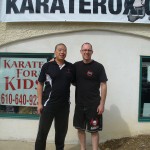 Sifu Kelly Knight and his band of Wing Chun students at the Martial Arts & Fitness Center in Malvern, Pennsylvania welcomed me back to work with them again, as their thirst to learn some good Wing Chun continues. Although a small group, they are a dedicated and enthusiastic bunch, eager to improve their kung fu skills.
Sifu Kelly Knight and his band of Wing Chun students at the Martial Arts & Fitness Center in Malvern, Pennsylvania welcomed me back to work with them again, as their thirst to learn some good Wing Chun continues. Although a small group, they are a dedicated and enthusiastic bunch, eager to improve their kung fu skills.
